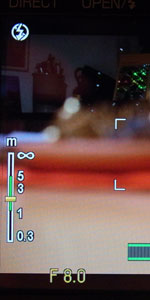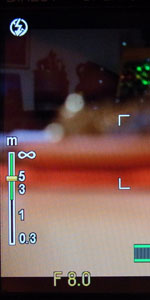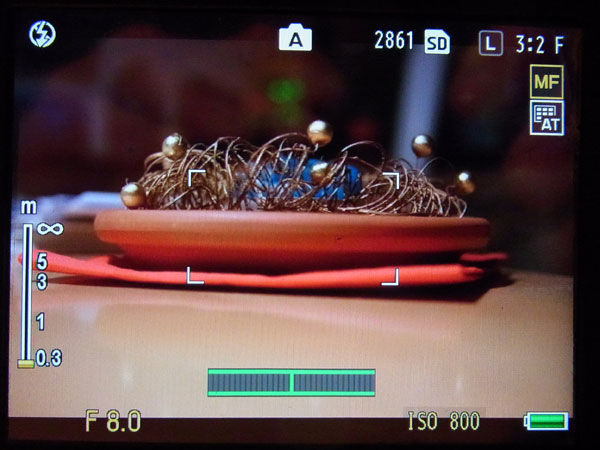Leica X Vario and Ricoh GXR A16: Manual Focus Comparison
Focusing Manually | Looking Through the Electronic Viewfinders... | Focusing Aids: Magnification and Focus Peaking | Conclusions
Archive
On this page, I would like to discuss the differences in manual focusing, which in part result from the differences in the viewfinders and focusing aids, which I therefore also compare here.
Note: For details on focusing manually with the Ricoh GXR, see page Ricoh GXR: Manual Focusing. For not so detailed information on focusing manually with the Leica X Vario, see page Leica X Vario: Manual Focusing.
Focusing Manually
With the Leica X Vario, switching to manual focus is easy: just turn the lens' focus ring from the "AF" position over a slight mechanical resistance to the right.
Manual focusing can be performed using:
- The image displayed by the viewfinder/LCD screen (sharpness of the image, a focus aid is offered by the screen magnification function)
- The distance scale on the focus ring of the lens (see photos below); there is no depth of field (DOF) indicator (see my DOF tables on this site)
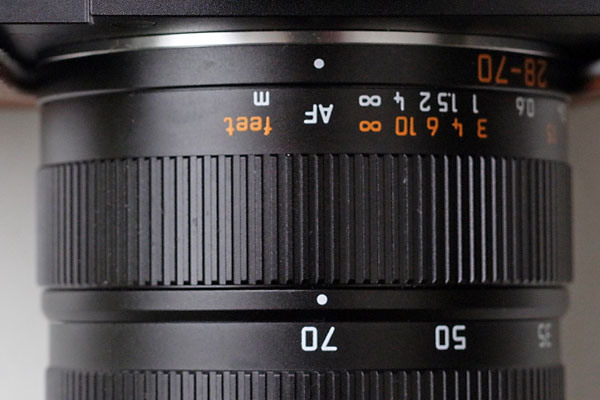 |
 |
|
Focus set to AF |
Focus set to infinity (as an example of manual focus) |
Photos: Focus set to "AF" and infinity as an example of "MF"
Note that, like the Ricoh GXR A16, the Leica X Vario does not have a dedicated macro mode. However, here the tele end is the preferred setting, allowing the lowest distance (30 cm) and the largest magnification. The camera therefore reminds you to change the focal length to 70 mm whenever you want to set a lose distance (which can be annoying at times...).
With the Ricoh GXR A16, manual focusing can be turned on in various ways. Typically, the focus methods can be selected in the "Shooting" menu, which can be assigned to the "Adjust lever" functions. Switching between "AF" and "MF" can also be assigned to one of the two "Function" buttons.
For focusing manually with the Ricoh GXR A16, you have to press the "Macro" button and then turn a thumb wheel while looking through the viewfinder (other camera units may function differently). Personally, I find having to press the "Macro" button for focusing not very comfortable when using the EVF with the left eye.
Manual focusing can be performed using:
- The image displayed by the viewfinder/LCD screen (sharpness of the image, focus aids are offered by the focus assist and screen magnification functions)
- The distance and depth of field scales displayed in the viewfinder/LCD screen (see photos below)
In manual mode, a distance scale appears in the viewfinder with a green depth of field indication:
Photos: Distance scale with a green depth of field indication (A12-50); the right photo shows a kind of "hyperfocal" distance setting
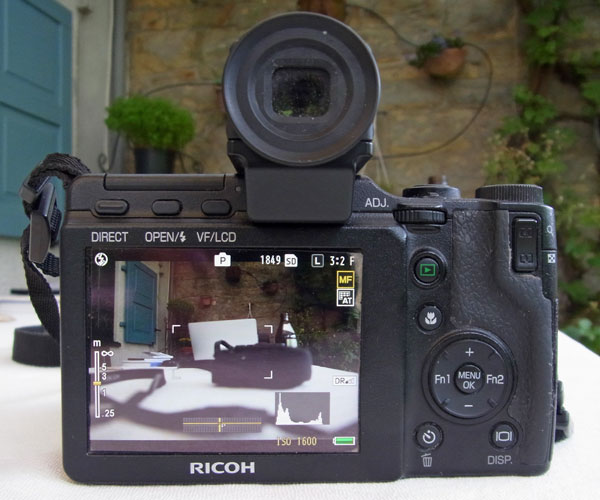
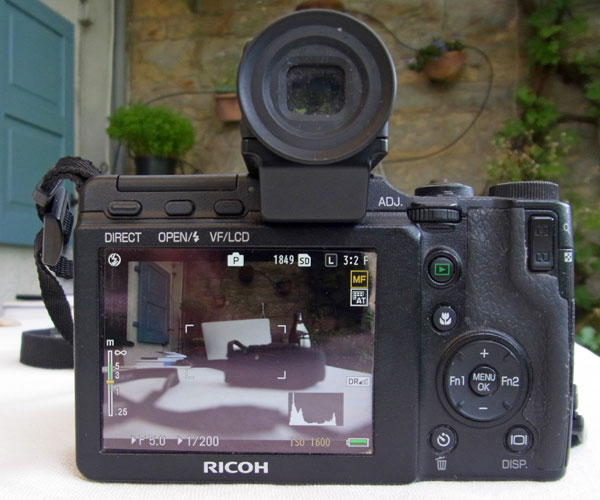
Photos: Distance scale without and with depth of field indicators on the Ricoh GXR; see also how close the macro button is to the directional pad
Note that, like the Leica X Vario, the Ricoh GXR A16 camera unit does not have a dedicated macro mode (the shortest shooting distance is 25 cm).
See pages Ricoh GXR: Manual Focusing, Recommendations for Taking Macro Photos, and Manual Focusing with M-Mount for details on manual focusing with the Ricoh GXR.
Conclusions
Focusing manually with the X Vario is much more direct and convenient than with the GXR A16. With the X Vario, you turn the focus ring to the desired position if you want to pre-focus or turn the focus ring while looking through in the viewfinder or at the LCD screen (I rarely use the latter for taking photos).
With the GXR A16, as for any other GXR camera unit without a focus ring, you have to press the macro button on the camera back while turning a thumb wheel to set the focus manually. This is cumbersome when looking through the viewfinder and less cumbersome when using the LCD screen. However, even then I often inadvertently hit the directional pad and change the exposure compensation in the direction of overexposure (sometimes without realizing it), because the macro button is so close to the "+" position of the directional pad.
Please note that there is no depth of field scale on the Leica X Vario lens, whereas the GXR displays one in the viewfinder or on the LCD screen - at least sometimes (I haven't yet figured out when...).
Looking Through the Electronic Viewfinders...
Let me first show photos of the look through the viewfinders of the Leica X Vario and the Ricoh GXR (this is independent of the camera unit):
(1) Smaller versions for easier size comparison:
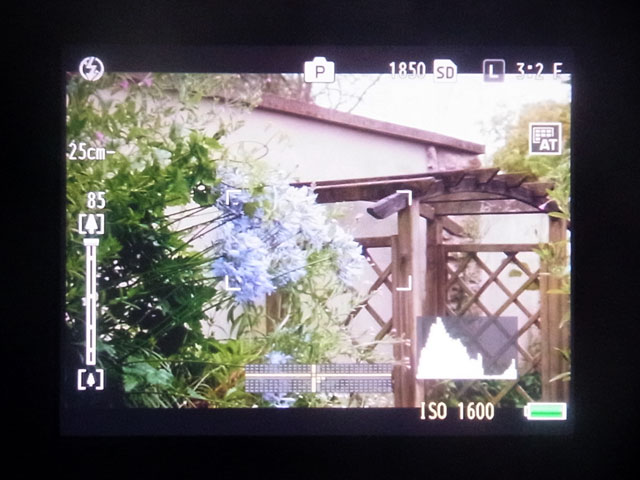 |
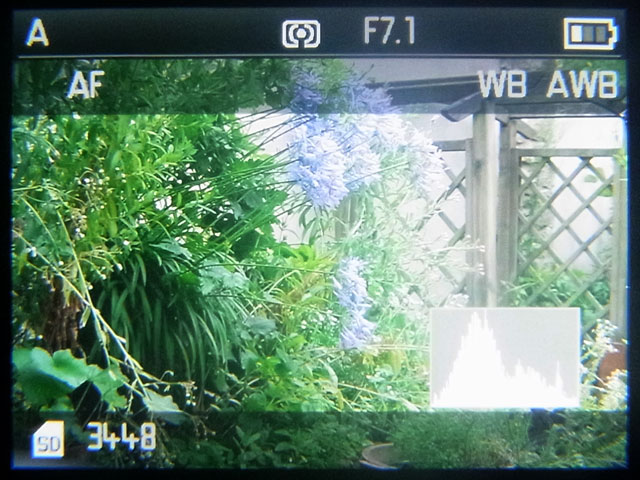 |
|
GXR with EVF2 |
X Vario with VF-2 |
(2) Larger versions for more details (click the images for even larger versions):
Photo: Look through the EVF2 viewfinder on the Ricoh GXR
Photo: Look through the VF-2 viewfinder on the Leica X Vario
The photos were taken with my wife's Ricoh CX4 in macro mode (focus set to infinity). Of course, they do not show the details, for example, the pixels that I can discern in the X Vario's viewfinder. Nevertheless, I find manual focusing using the viewfinder much easier with the X Vario than with the GXR even without using any focusing aids, because the X Vario viewfinder image is larger and shows more details.
The Ricoh's viewfinder image appears brighter and more vivid to me, and you cannot detect pixels, but it is too small for me to focus manually with ease.
Focusing Aids: Magnification and Focus Peaking
The Leica X Vario only offers only one focusing aid: the enlargement of a part of the screen. Screen magnification can be turned on and off in the menu (MF Assist).
The magnified section of the image that appears for about 2-3 seconds (5 seconds according to the manual). It comes up whenever the focus ring is turned. It also comes up for the same period of time when you press the DELETE/FOCUS button on the back (left side, second button from top - see photos below). Again, the magnified section disappears after about "nominally" 5 seconds.
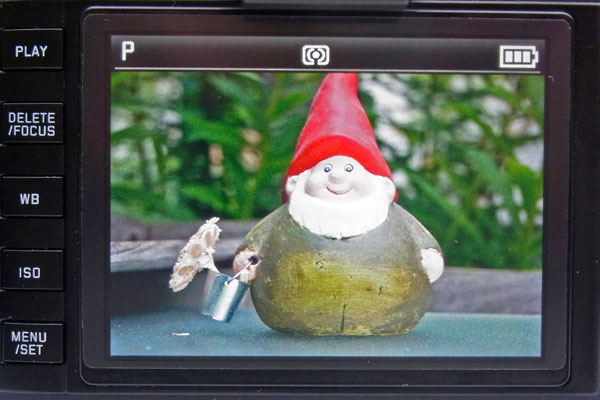 |
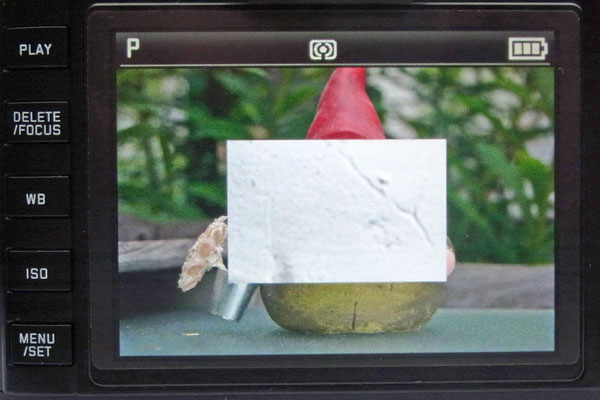 |
|
No magnification |
Section magnification |
Photos: Screen magnification on the Leica X Vario
The enlarged section offers a magnification of about 6 x, but the image quality of the magnified section is poor so that I usually focus manually without using screen magnification. It can be moved around using the direction pad. However, this option makes sense to me only for shots where the camera is on a tripod - I never use it for hand-held shots.
The Leica X Vario does NOT have focus peaking.
The Ricoh GXR has the following focus aids:
- Two kinds of screen magnification: (a) a section is magnified and covers the whole screen, (b) a section is magnified and covers part of the screen; the magnification can be set to 2 x, 4 x, or 8 x in the menu.
- Two focus peaking modes: (1) mode 1 makes contours shimmer, (2) mode 2 delivers a black and white image with highlighted contours (a kind of high-pass filter)
Both aids can be combined. They stay after you have invoked them and go away when you half-press the shutter release button (there are even more options...).
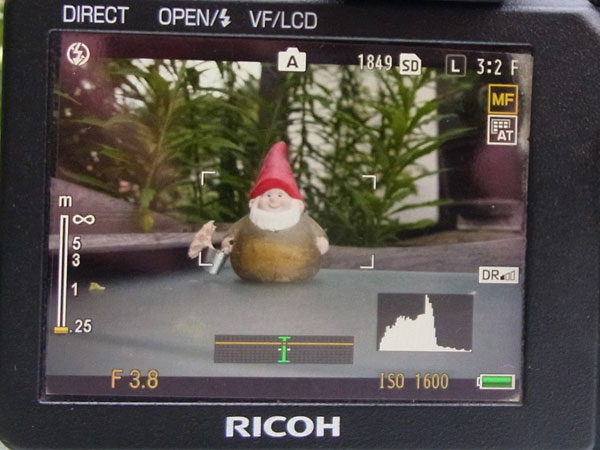 |
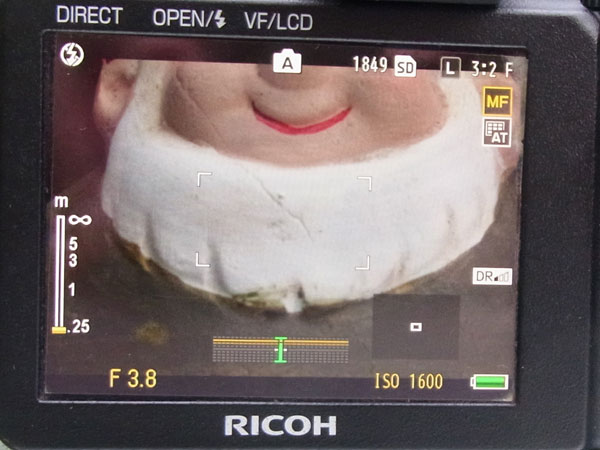 |
|
No magnification |
Fullscreen magnification 8 x |
|
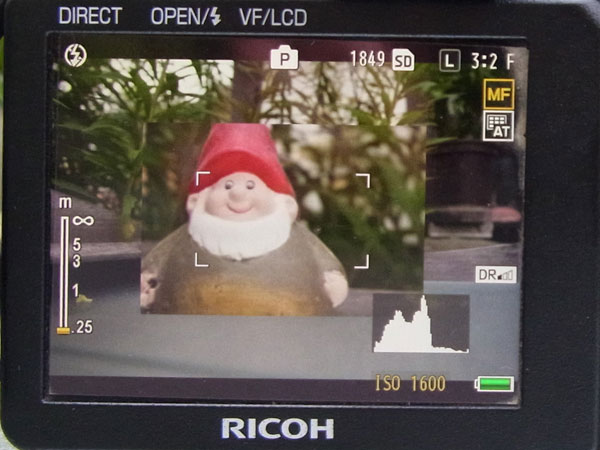 |
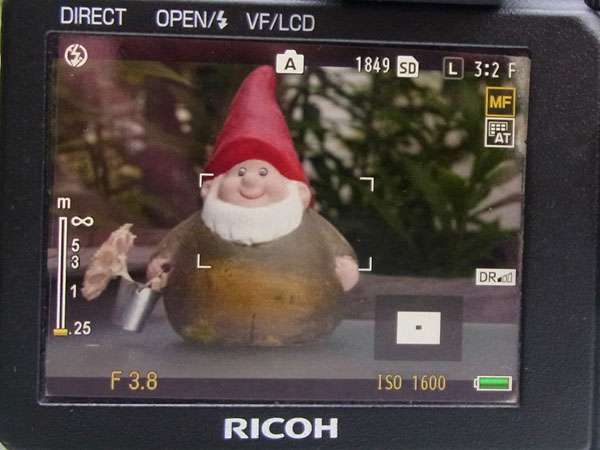 |
|
Section magnification 2 x |
Fullscreen magnification 2 x |
Photos: Examples of options for screen magnification on the Ricoh GXR
Here are sample photos without and with focus assist:
Photos: No focus assist (left, focus assist mode 1 (center) and mode 2 (right)
Most users prefer focus assist mode 2, whereas I prefer mode 1 or no focus assist at all, that is, only full screen magnification. Focus assist can, of course, be combined with screen magnification.
Note that the magnified section has a much higher quality when it covers the whole screen compared with when it covers the screen only partially - although the photos above may not show this conclusively. Probably for a similar technical reason, the quality of the enlarged section is not very good on the Leica X Vario. Actually, magnification does not help me a lot...
For details on the focus peaking options for the Ricoh GXR see pages Recommendations for Taking Macro Photos and Manual Focusing with M-Mount.
Conclusions
Focusing manually with the Leica X Vario is much easier and more joy than with the Ricoh GXR, although the short period of time that the magnified section is displayed is completely insufficient and annoying. The quality of the magnified section is also insufficient. Therefore, I prefer to focus manually without screen magnification on the X Vario.
Setting the focus manually on the GXR is cumbersome: You have to press the macro button and then turn a thumb wheel while looking through the viewfinder. The viewfinder image resolution and size are, in my opinion, not appropriate for manual focusing. The GXR's screen magnification helps a lot, particularly when the magnified section covers the whole screen, but, of course, you lose the context of the image section. Half-pressing the shutter release button restores the full image and allows you to compose the photo. Both GXR focus peaking modes are not ideal for me. Usually, I therefore do not use focus peaking, only screen magnification (full screen) - whereas others like it a lot (or at least one of the modes - opinions vary in this respect...).
All in all, even though I can discern the pixels in the X Vario's viewfinder and I find the viewfinder colors dull, focusing manually is easier for me with the X Vario than with the GXR - even without using any focusing aids - because the viewfinder has a larger magnification.
| 03.04.2019 |
